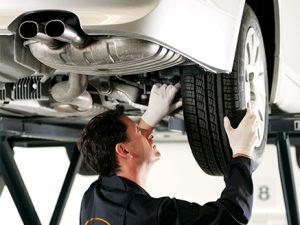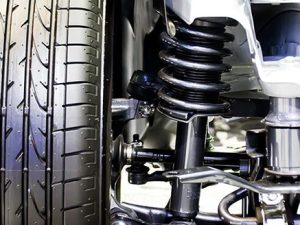Table of Contents
- The Importance of Checking Your Suspension
- Common Signs of Suspension Issues
- Suspension Maintenance Tips
- Where to Buy Car Parts?
The suspension system in your vehicle plays a crucial role in ensuring a smooth and safe driving experience. It is responsible for absorbing shocks, improving vehicle stability, and providing comfort to the driver and passengers. Regularly checking and maintaining your suspension system is essential for the vehicle’s overall performance, handling, and safety. In this article, we will discuss why it is important to check your suspension regularly, and provide you with some valuable maintenance tips to keep it in top condition.
The Importance of Checking Your Suspension

The suspension system is constantly exposed to road conditions, impacts, and the weight of the vehicle. Over time, parts such as shock absorbers, springs, control arms, and ball joints can wear out, which can lead to various issues affecting the vehicle’s handling and safety. Regular suspension checks help identify potential problems before they become serious and costly repairs.
Here are some reasons why checking your suspension regularly is crucial:
1. Improved Vehicle Handling and Stability
The suspension system has a direct impact on how your vehicle handles turns, bumps, and uneven surfaces. A properly maintained suspension system ensures that your vehicle remains stable, especially when driving at high speeds or making sharp turns. Worn-out suspension components, such as shocks or struts, can reduce the vehicle’s ability to maintain proper contact with the road, leading to poor handling and increased risk of accidents.
2. Enhanced Ride Comfort
Suspension components, particularly shock absorbers and springs, help absorb road shocks and vibrations. Without proper maintenance, these components can lose their effectiveness, resulting in a bumpy and uncomfortable ride. Regular suspension checks ensure that the system is working efficiently to provide a smooth and comfortable driving experience, reducing driver fatigue on long trips.
3. Improved Tire Life and Alignment
The suspension system plays a vital role in maintaining proper wheel alignment and ensuring even tire wear. If suspension components such as ball joints or control arms are worn, they can cause misalignment, leading to uneven tire wear and the need for premature tire replacements. Regular suspension checks help identify these issues and prevent unnecessary wear on your tires, saving you money in the long run.
4. Increased Safety
A malfunctioning suspension system can significantly impact your vehicle’s safety. Worn-out components can lead to decreased braking efficiency, poor traction, and reduced ability to control the vehicle, especially in emergency situations. Regular suspension checks help identify worn or damaged components, reducing the risk of sudden failures that could lead to accidents.
5. Preventing Costly Repairs
By regularly inspecting your suspension system, you can catch small problems early before they develop into more serious and expensive repairs. Ignoring early signs of suspension damage, such as unusual noises, vibrations, or handling issues, can lead to more extensive damage and costly repairs. A proactive approach to maintenance ensures that your suspension system remains in good condition and prevents expensive replacements.
Common Signs of Suspension Issues

Knowing the signs of suspension problems can help you identify when your vehicle needs attention. Here are some common symptoms that indicate your suspension may require a check-up:
- Uneven tire wear: If you notice uneven wear patterns on your tires, this could be a sign that your suspension is misaligned or that components are worn.
- Bumpy ride: A noticeable decrease in ride comfort, such as a bumpy or rough ride even on smooth roads, may indicate that the shock absorbers or struts are worn out.
- Pulling to one side: If your vehicle pulls to one side while driving straight, it could be a sign of suspension issues, such as damaged control arms or misaligned wheels.
- Unusual noises: Clunking, rattling, or squeaking sounds coming from the suspension when going over bumps or turning corners are often signs of worn or damaged suspension parts.
- Dipping or swaying: If your vehicle dips or sways excessively when braking or making turns, it may indicate that the shock absorbers or struts need replacing.
- Steering wheel vibrations: If the steering wheel vibrates or feels loose while driving, it may be due to worn suspension components, such as ball joints or tie rods.
Suspension Maintenance Tips
To ensure that your suspension system continues to perform optimally, regular maintenance and inspections are essential. Here are some useful tips for maintaining your suspension system:
1. Inspect Shock Absorbers and Struts
Shock absorbers and struts are some of the most vital components in the suspension system, and they should be inspected regularly for signs of wear. Check for oil leaks, which can be a sign that the shock absorbers or struts are losing their effectiveness. If your vehicle exhibits poor ride quality, excessive bouncing, or difficulty maintaining control, it may be time to replace these components.
| Tip | Description |
|---|---|
| Inspect for oil leaks | Look for any fluid leaks around the shocks or struts. |
| Test for excessive bouncing | Push down on each corner of the vehicle and observe how it responds. |
| Check for handling issues | If the vehicle bounces excessively or is hard to control, it could be time for new shock absorbers or struts. |
2. Check for Worn Bushings and Ball Joints
Bushings and ball joints are critical for maintaining the alignment and movement of the suspension system. Worn bushings can cause noise, vibrations, and poor handling, while damaged ball joints can affect the alignment and steering of the vehicle. Check for any signs of cracking, tearing, or excessive play in these components and replace them if necessary.
| Tip | Description |
|---|---|
| Look for cracks or tears | Inspect rubber bushings for cracks or visible damage. |
| Check for play in ball joints | Wiggle the suspension parts to check for excessive play. |
| Replace when necessary | If damaged, replace bushings or ball joints immediately to avoid further issues. |
3. Inspect Springs for Damage
Suspension springs absorb the impact of road bumps and maintain the vehicle’s height. Over time, springs can lose their tension, leading to a decrease in ride quality. Inspect the springs for any signs of damage, such as cracks or corrosion, and replace them if needed.
| Tip | Description |
|---|---|
| Look for cracks or corrosion | Check for any visible damage or rust on the springs. |
| Test for proper tension | Ensure the vehicle remains level and balanced, even when loaded. |
4. Ensure Proper Alignment
Proper wheel alignment is crucial for maintaining even tire wear and stable handling. Misalignment can be caused by worn suspension components, and it can lead to excessive tire wear and handling issues. Have your alignment checked regularly, especially if you notice your vehicle pulling to one side or if your steering wheel is off-center.
| Tip | Description |
|---|---|
| Get regular alignments | Schedule a wheel alignment check at least once a year. |
| Look for signs of misalignment | If the vehicle pulls to one side or the steering wheel vibrates, have the alignment checked. |
5. Monitor Your Tires
Your tires are the first components to bear the impact of road conditions, and they provide vital information about the health of your suspension system. Regularly inspect your tires for uneven wear patterns, bulges, or damage, as this can indicate suspension issues. Ensure that your tires are properly inflated and rotated to promote even wear and extend their lifespan.
| Tip | Description |
|---|---|
| Inspect for uneven wear | Check your tires for signs of uneven wear or bald spots. |
| Rotate your tires regularly | Rotate tires to promote even wear and improve handling. |
| Maintain proper tire pressure | Check tire pressure regularly to ensure optimal performance. |
Where to Buy Car Parts?
When it’s time to replace any suspension components, it’s essential to choose high-quality parts that will maintain the integrity of your vehicle. You can find a wide range of suspension parts, including shock absorbers, control arms, struts, and bushings, online. Where to buy car parts? is a great place to start your search for reliable, durable, and affordable suspension components.
Conclusion
Regularly checking and maintaining your vehicle’s suspension system is essential for ensuring a smooth, safe, and comfortable driving experience. By paying attention to signs of suspension issues and following these maintenance tips, you can improve the handling, stability, and safety of your vehicle. If you need replacement parts, make sure to choose high-quality components and keep your suspension in top condition for years to come.